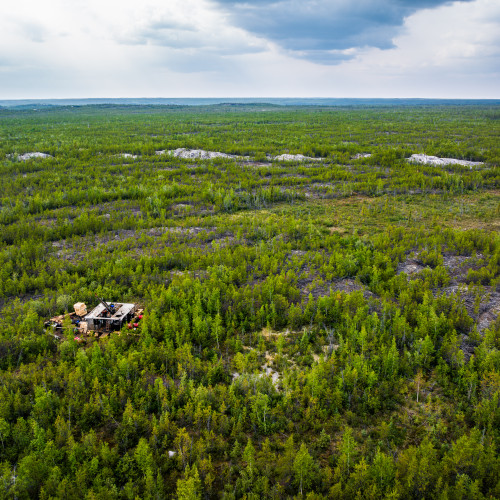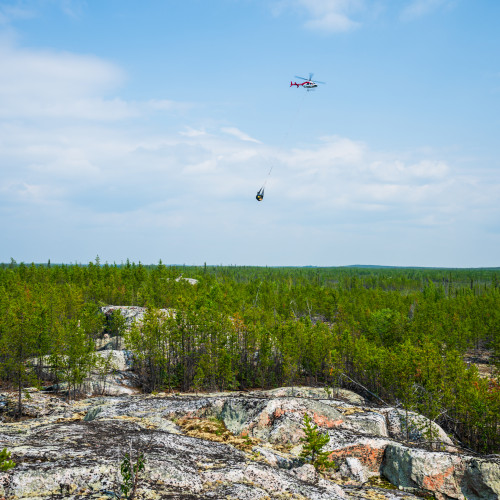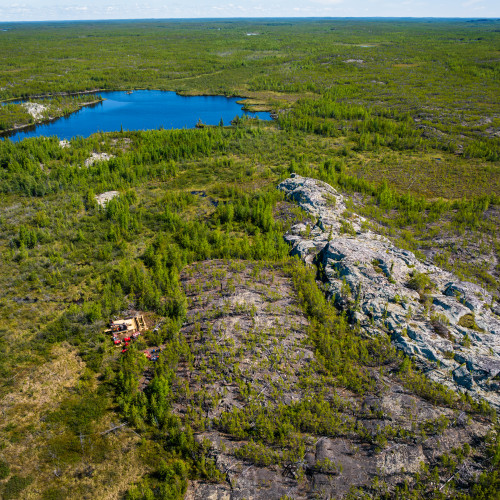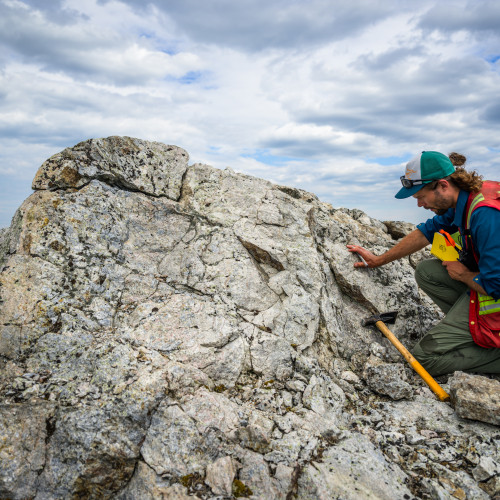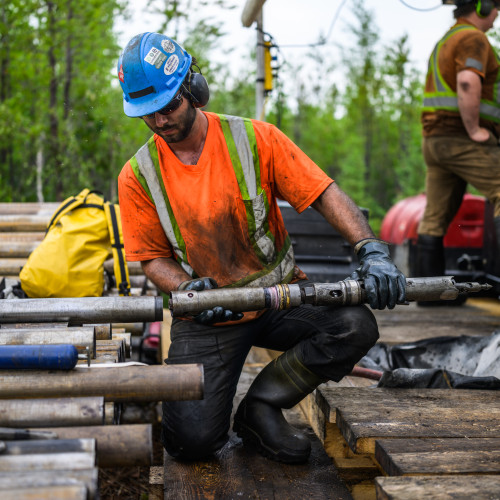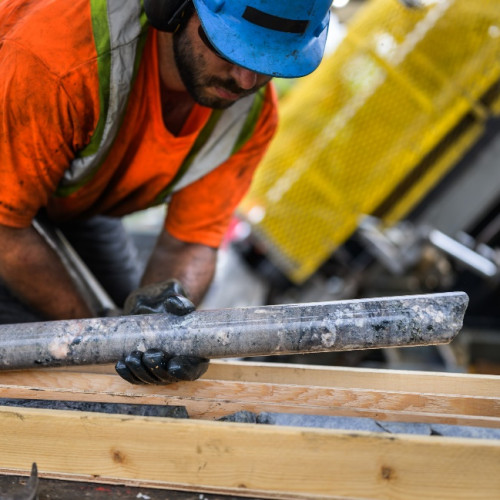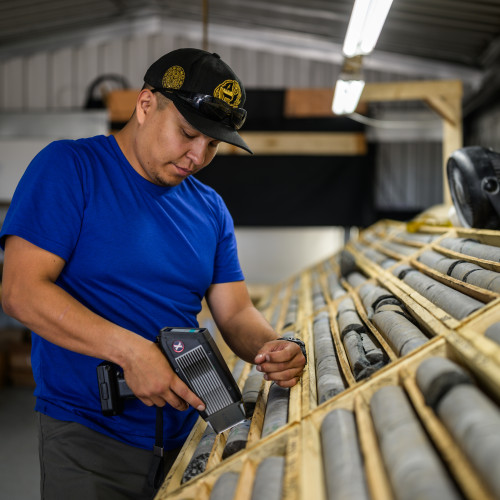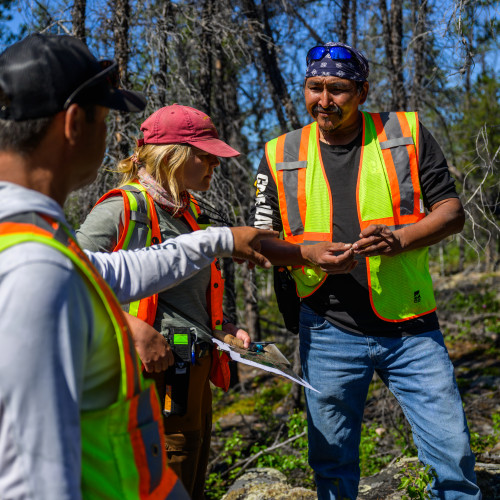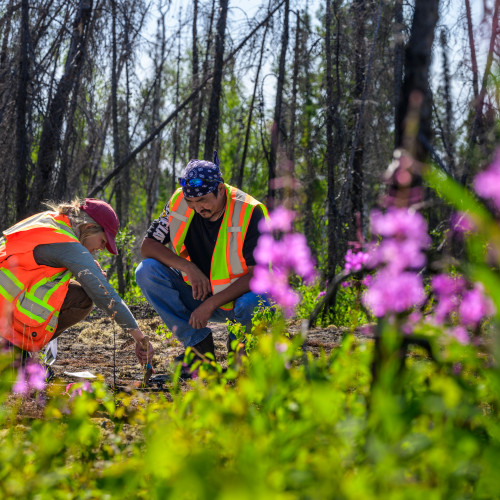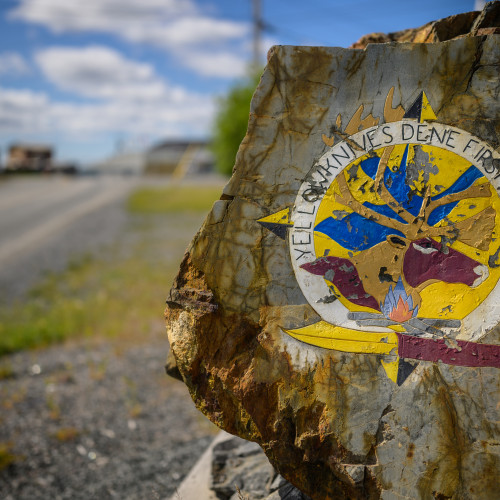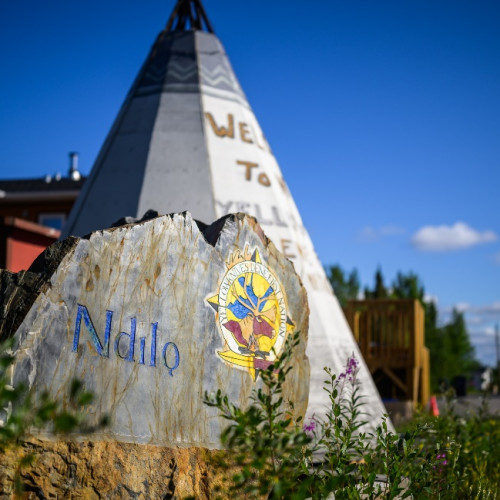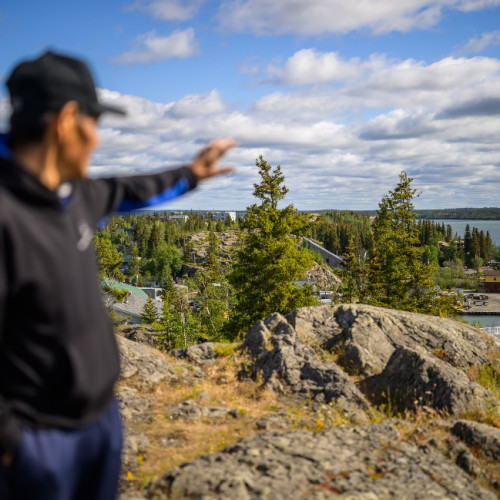On November 22nd, 2022, Li-FT entered into an amalgamation agreement with a private company to acquire a 100% interest in the Yellowknife Lithium Project ("YLP").
The YLP consists of mineral leases that cover the majority of the lithium pegmatites that make up the Yellowknife Pegmatite Province ("YPP").
Numerous spodumene-bearing pegmatites with strike lengths up to 1,800 m and widths up to 30 m outcrop within the Project and are visible from satellite imagery. The YPP also benefits from excellent existing infrastructure, including roads, rail and a skilled labour force that could support the development of this project.
YELLOWKNIFE LITHIUM PROJECT HIGHLIGHTS
- Portfolio of lithium pegmatites which could produce the largest hard rock lithium resource in North America. The Yellowknife Lithium Project contains 13 different lithium pegmatite systems that are in large part exposed at surface and large enough to be visible from satellite imagery. Grades average between 1.0%- 1.2% Li2O over widths of 10 to 30 m. Strike extents of pegmatites visible on surface are 100 to 1,800 m.
- Initial Mineral Resource Estimate of 50.4 Mt at 1.00% Li2O released in October 2024, which is the 3rd largest initial resource estimate for spodumene projects in Canada.
- The initial resource estimate further positions the YLP as a globally significant source of spodumene and will underpin a Preliminary Economic Assessment (“PEA”) that is on track to be completed in Q2 2025.
- Completed metallurgical testing on 8 out of 13 pegmatites, achieving an average recovery of 79% and producing high-quality spodumene concentrate grading 5.83% Li2O.
- Advantageous location near railway. Railway access at the town of Hay River, Northwest Territories, located on the southern side of Great Slave Lake can be utilized for shipping spodumene concentrate. Spodumene concentrate could be moved by barge from Yellowknife to the rail head or by all-weather road.
- Road accessible. The Fi, Ki, Shorty, BIG, and Nite minerals leases are located within 60 km of the city of Yellowknife with road access.
YELLOWKNIFE PROJECT HISTORY
Lithium mineralization hosted in spodumene-bearing pegmatites of the Yellowknife Pegmatite Province was first discovered in the 1940’s and intermittently explored until the 1980’s. Canadian Superior Exploration Limited (CSEL), the exploration arm of Superior Oil, completed systematic mapping, spodumene crystal counts, blasting-trenching, channel sampling and diamond drilling in the area from 1975 to 1979.
Superior Oil was acquired by Mobil in 1984 which led to the divestment of the CSEL mineral properties and the claims holding the largest lithium pegmatites were transferred to a private company. In 1985, the private company entered into an option agreement with Equinox Resources Ltd. who collected bulk samples in 1987 for initial metallurgical testing. The results from initial metallurgical testing were positive and Equinox recommended a full feasibility study. Equinox was later acquired by Hecla Mining Company and the YPP lithium deposits reverted back to the private company. Since 1987, very little exploration work was completed on any of the pegmatites.
EXPLORATION
Between July 2023 and April 2024, Li-FT successfully completed 50,000 m of diamond drilling, in 286 drill holes across 8 pegmatite targets. The drilling targeted dykes explored by CSEL down to a vertical depth of 300 m.
The results indicate average lithium grades ranging from 1.0% to 1.20%, with intercept widths between 10 and 30 meters. Most pegmatites remain open at depth and along strike, with additional step-out drilling planned to delineate the full extent of mineralization.
A detailed summary of drill results can be found in the table below.
INITIAL MINERAL RESOURCE ESTIMATE
In October 2024, Li-FT released its initial Mineral Resource Estimate ("MRE") for the YLP.
The MRE covers 8 of the 13 spodumene-bearing pegmatite dykes and reports a consolidated in-pit estimate of 50.4 million tonnes (Mt) grading 1.00% Li2O for 506,000 tonnes of Li2O (1.25 million tonnes of LCE) in the inferred category. This resource estimate will serve as the foundation for a Preliminary Economic Assessment (“PEA”), which is scheduled for completion in Q2 2025.
Highlights:
- The initial resource estimate at the YLP represents the 3rd largest hard-rock initial resource estimate in Canada and the 10th largest hosted in the Western Hemisphere.
- 6 of the 8 spodumene dykes included in the initial resource estimate have unconstrained mineralization, providing significant opportunity for growth.
- 5 undrilled spodumene dykes hosted within the YLP that were not included in the initial resource estimate have excellent potential to further expand the resource profile.
- The initial resource estimate is only based on 10 months and 49,548 m of drilling.
- The initial resource estimate further positions the YLP as a globally significant source of spodumene and will underpin a PEA that is on track to be completed in Q2 2025.
- Excellent access to infrastructure, including the Ingraham Trail running through part of the mineral resource, proximity to rail at Hay River, existing powerlines outside of Yellowknife, and access to major ports in Prince Rupert and Vancouver for shipment to Asian markets.
- The x-ray diffraction analysis and pilot-scale testing completed as part of the YLP metallurgical program provides confirmation of simple lithium mineralogy and that low-cost dense medium separation (“DMS”) is suitable for the spodumene dykes included the initial resource estimate.
Yellowknife Lithium Project Deposit In-pit Mineral Resource Estimate
| Cut-off Grade (Li2O%) | Pegmatite Deposit | Tonnes | Li2O Grade (%) | Li2O (t) | LCE (t)* | Resource Classification |
| 0.4 | Big East, Fi Main and Fi SW | 30,265,000 | 1.05 | 317,000 | 784,000 | Inferred |
| 0.5 | Big West, Nite, Shorty, Echo and Ki | 20,118,000 | 0.94 | 189,000 | 467,000 | Inferred |
| Total | 50,383,000 | 1.00 | 506,000 | 1,251,000 |
* Lithium carbonate equivalent (“LCE”)
Yellowknife Lithium Project Mineral Resource Estimate Notes:
- The Mineral Resource Estimate (MRE) was estimated by Allan Armitage, Ph.D., P. Geo. of SGS Geological Services, an independent Qualified Person as defined by NI 43-101.
- The classification of the current MRE into Inferred mineral resources is consistent with current 2014 CIM Definition Standards for Mineral Resources and Mineral Reserves. The effective date for the Mineral Resource Estimate is September 25, 2024.
- All figures are rounded to reflect the relative accuracy of the estimate and numbers may not add due to rounding.
- The mineral resource is presented undiluted and in situ, constrained by continuous 3D wireframe models, and are considered to have reasonable prospects for eventual economic extraction.
- Mineral resources which are not mineral reserves do not have demonstrated economic viability. An Inferred Mineral Resource has a lower level of confidence than that applying to an Indicated Mineral Resource and must not be converted to a Mineral Reserve. It is reasonably expected that most Inferred Mineral Resources could be upgraded to Indicated Mineral Resources with continued exploration.
- The YLP MRE is based on a validated database which includes data from 286 surface diamond drill holes totaling 49,548 m. The resource database totals 10,842 assay intervals representing 10,846 m of drilling. The average assay sample length is 1.00 m.
- The MRE is based on 126 three-dimensional (“3D”) pegmatite resource models, constructed in Leapfrog, representing the Big East, Big West, Fi Main, Fi SW, Nite, Shorty, Echo and Ki pegmatite deposits. Li2O grades were estimated for each mineralization domain using 1.0 metre composites. To generate grade within the blocks, the inverse distance squared (ID2) interpolation method was used for all deposits.
- Average density values were assigned to pegmatite and waste domains based on a database of 2,062 samples.
- Li-FT envisions that the YLP deposits may be mined using open-pit mining methods. Mineral resources are reported at a base case cut-off grade of 0.40 to 0.50% Li2O. The in-pit Mineral Resource grade blocks are quantified above the base case cut-off grades, above the constraining pit shell, below topography, and within the constraining mineralized domains (the constraining volumes).
- The results from the pit optimization are used solely for the purpose of testing the “reasonable prospects for economic extraction” by an open pit and do not represent an attempt to estimate mineral reserves. There are no mineral reserves on the Property. The results are used as a guide to assist in the preparation of a Mineral Resource statement and to select an appropriate resource reporting cut-off grade.
- The base-case Li2O Cut-off grade considers the following assumptions: a lithium concentrate (5.5% Li2O) price of US$920/t, a mining cost of US$3.25/t mined, processing, treatment, refining, G&A and transportation cost of USD$19.50/t of mineralized material, metallurgical DMS recovery of 60% was assumed, as were pit slope angles of 60º and mining loss and dilution of 5% and 5%.
- The estimate of Mineral Resources may be materially affected by environmental, permitting, legal, title, taxation, socio-political, marketing, or other relevant issues.



